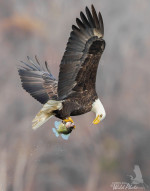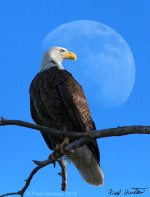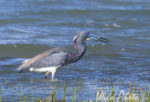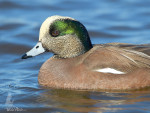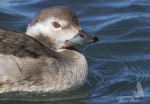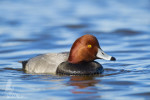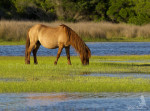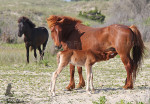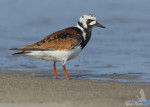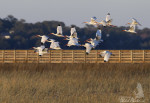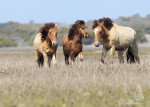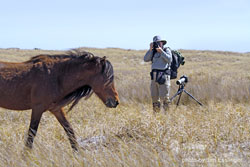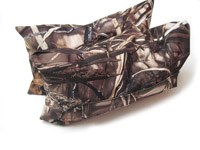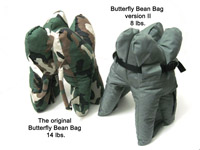The Florida Bird Haven Myth
by admin on Mar.16, 2019, under Locations, Rants, Raves & Ramblings
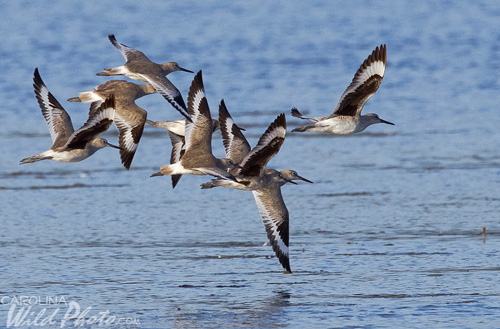
It’s the middle of March, 2019, and I just got back from a 9-day trip to sunny Florida to photograph birds that I had never seen in person before. I’d been thinking about such a trip for years, encouraged by the photos and stories I’d heard and read from other photographers. I was excited about finally getting a chance to see and photograph Roseate Spoonbills, and Wood Storks, and Reddish Egrets, and other interesting species. Yeah, so many birds you can’t take it all in – birds, birds everywhere you turn, right there just feet away – so close you have to use short lenses….. Yeah, right!
While all that is sorta true, it also sorta isn’t. Sure, I got shots of some of the birds I was hoping to find, and some photos of others that I didn’t expect to see. But the grand variety and numbers of birds that all the stories implied simply were not there. Among my targets for exploration were Ding Darling NWR at Sanibel, Estero Lagoon in Fort Myers Beach, the St. Augustine Alligator Farm rookery, Big Talbot and Little Talbot State Park and Spoonbill Pond, Amelia Island, Merritt Island NWR’s Bio Lab Road and Black Point Wildlife Drive, and Cape Coral’s Burrowing Owls.
Something the stories failed to mention was the toll roads and insane traffic one has to deal with to get to some of these places. Hours wasted trying to reach locations that should have only taken minutes. The supposed great flocks of birds turned out to be onesies, or three, or maybe a dozen if you were lucky. The hype simply did not live up to its claims.
You need to understand that this trip was taken at a peak time for some of the birds I was aiming for. The weather simply could not have been any more ideal – temps from 70 to 85 degrees (warm enough but not excessively hot) with sunny skies and occasional light clouds, and one day with a high, thin overcast that actually gave perfect soft light for photography. The reality was this –
- Ding Darling NWR – one spot on the wildlife drive had a dozen White Pelicans, three Cormorants, three Snowy Egrets, two Little Blue Herons, three Roseate Spoonbills, four White Ibis, one Reddish Egret (resident with a transmitter on its back), and some Willets. The entire rest of the 4-mile wildlife drive had a random ibis, egret or heron here or there, or nothing.
- Estero Lagoon – three White Pelicans, two Cormorants, three Brown Pelicans, one female Mallard, one Osprey.
- Big Talbot and Little Talbot State Park areas – nothing, zip.
- Spoonbill Pond at Big Talbot – six Great Egrets one day, nothing the next day, or the next.
- St. Augustine Alligator Farm Rookery – up to a dozen Roseate Spoonbills (some building nests, but often resting with heads tucked away ), about a dozen pairs of Wood Storks building nests, more than a dozen pairs of Great Egrets, some White Ibis, a couple of Buzzards and Crows, one Anhinga, and one juvenile Yellow-crowned Night-Heron. Keep in mind most of these birds were half hidden or blocked behind foliage and limbs making finding a shot a chore. While there was a goodly number of birds, they were crammed into a dismally small area. You could literally stand in one spot and rotate 360 and photograph everything there was to see.
- Merritt Island NWR Bio Lab Road – nothing, nada, empty…. not even a goose egg.
- Merritt Island NWR Black Point Wildlife Drive – ( I was told not to waste my time with this spot, but it was the most productive of the entire trip) 6-8 Roseate Spoonbills (got five together in one shot), 6-8 Glossy Ibis, a dozen or so White Ibis, couple of Great Blue Herons, several Great Egrets, at least a dozen Snowy Egrets, 6 or so Little Blue Herons, 20 or so pairs of Northern Shovelers, dozens of pairs of Blue-winged Teal, great numbers of Coots, several pairs of Common Moorhen, a couple of Anhinga and one Sora.
I realize finding some of these birds is dependent to some extent on time of day and tide levels, but at Ding Darling for example, sunrise and sunset made no difference – same species at the one spot on the drive. That was it. The only difference was that you had the sun with you in the morning (shooting west) and against you in the evening (silhouettes), so evening was not as good for shooting. Merritt Island NWR’s Black Point drive winds back and forth so there was the chance of getting shots at either time of day where the sun was with you. At St. Augustine the light direction was better in the afternoon as a rule. I will go into more location detail in the upcoming posts for the various locations, with photos.
Suffice it to say that I was not as impressed with Florida as I was expecting to be. We actually cut the trip short and skipped some locations because of the horrific traffic. We found ourselves trying to plan our coming and going around traffic instead of around sunrise, sunset and tide times. Just getting to and from the locations became the goal, instead of being there at the proper times. That’s not a productive way to conduct any bird photography trip. It becomes an expensive waste of time. The straw that finally broke the camel’s back was when a drive from Fort Myers Beach to our hotel in Fort Myers that should have taken 50 minutes actually took 2-1/2 hours. I will be hard pressed to find any further interest in going to Florida for bird photography. Very disappointing.
 This blog is an extension of the
This blog is an extension of the 